- Home
- >
- Preservation Archaeology Blog
- >
- Hands-On Archaeology: How to Make a Shell Tinkler
(January 19, 2017)—Shell tinklers are a relatively common shell artifact we find in Hohokam and Salado archaeological sites in southern Arizona. Most are made of Conus shell or Olivella shell, both of which come from the Gulf of California. People strung the shells together such that they made a pleasant tinkling sound when they struck one another. The smaller the shell, the higher pitched they seem to be.
It is a relatively simple process to make shell tinklers: grind away the wider end, and make a notch or drill a hole in the narrower end. All you need are small Conus or Ollivella shells and a piece of sandstone to grind them on. Mine has a moderately coarse grit.
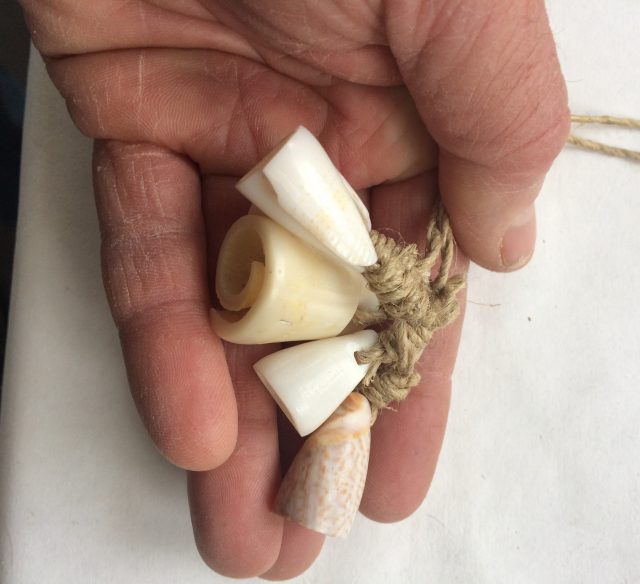
Shell #1:
Note that shell #1 is quite large for a tinkler.
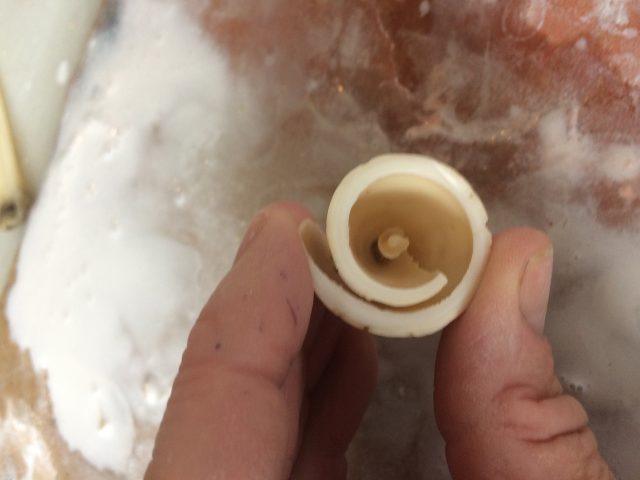
Make sure you have completely ground off the entire end. When I started, the shell weighed 30.5 grams, and when finished it weighed 18.1 grams. (There was a lot of sand packed down in the middle of the shell that came out once the end was ground off.)
It took about an hour and a half to make this tinkler. At the outset, it was 54.5mm long; finished, it was 35.7mm.
Shell #2:
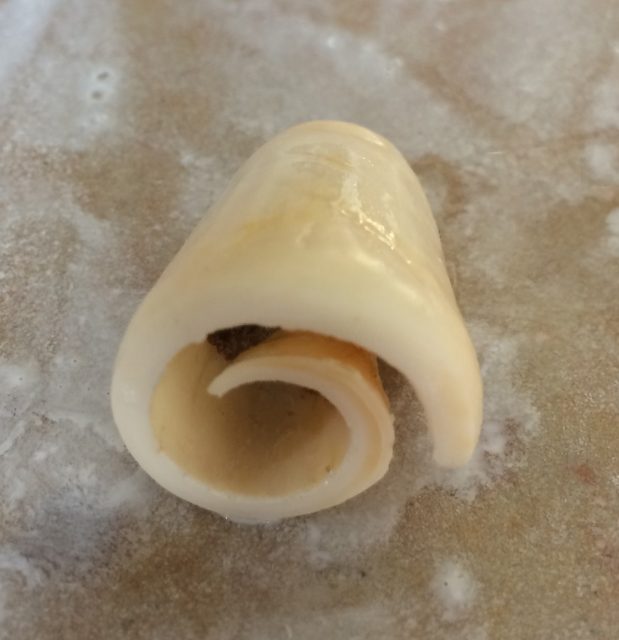 |
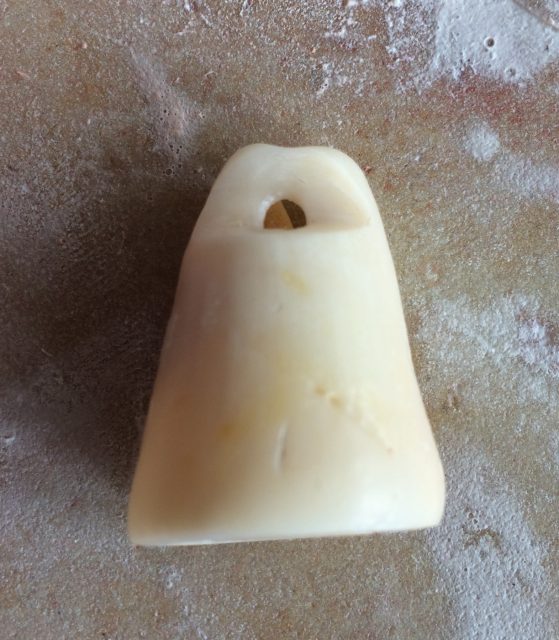 |
Shell # 2 is much smaller than shell #1. It is more like many ancient tinkler examples I have seen. It took 20 minutes to grind off the end, and 10 minutes to grind the notch hole.
2 thoughts on “Hands-On Archaeology: How to Make a Shell Tinkler”
Comments are closed.

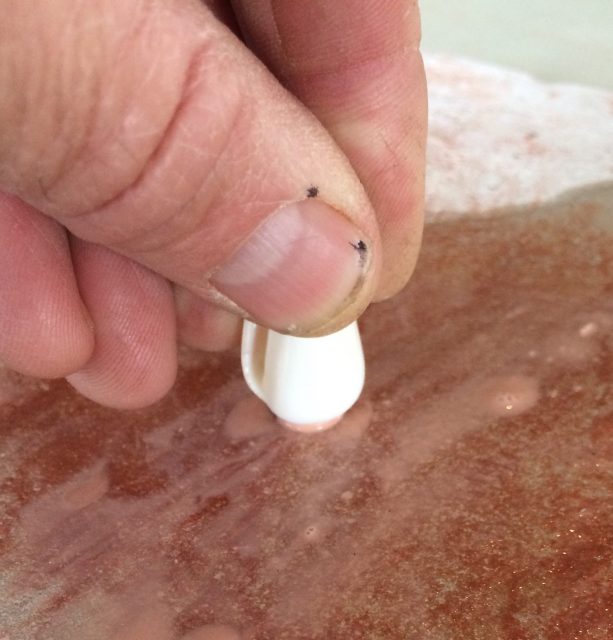
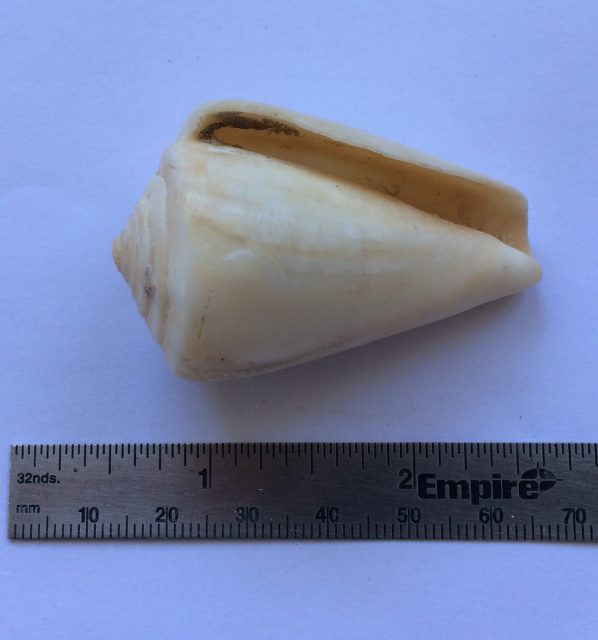
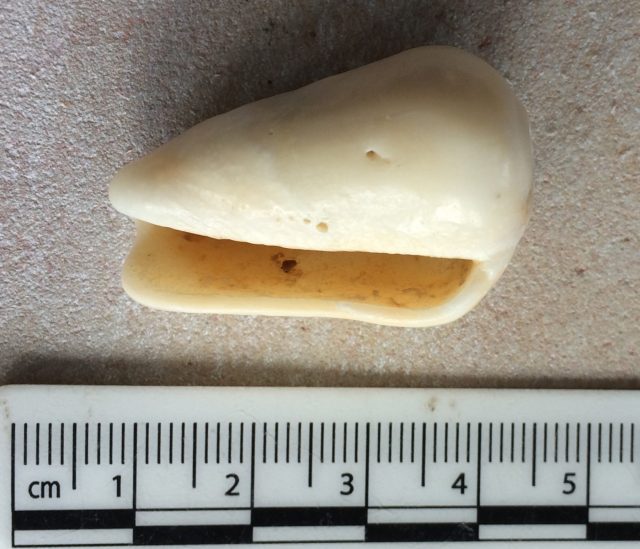
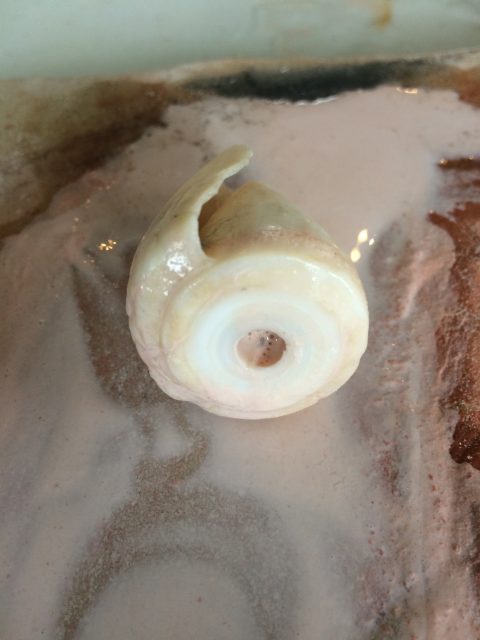
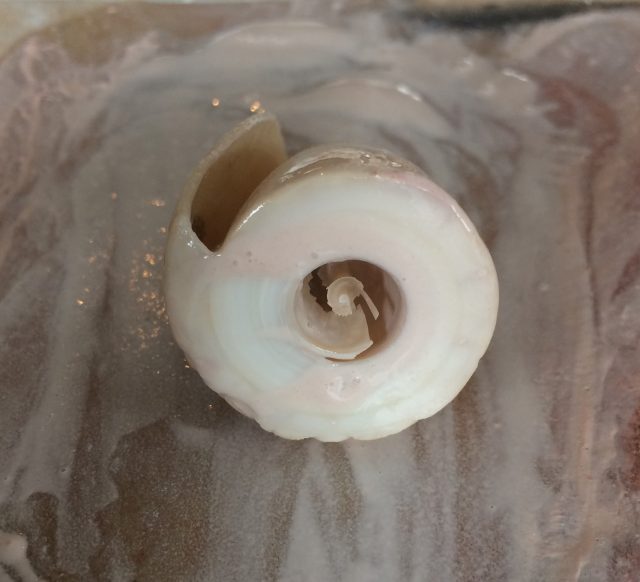
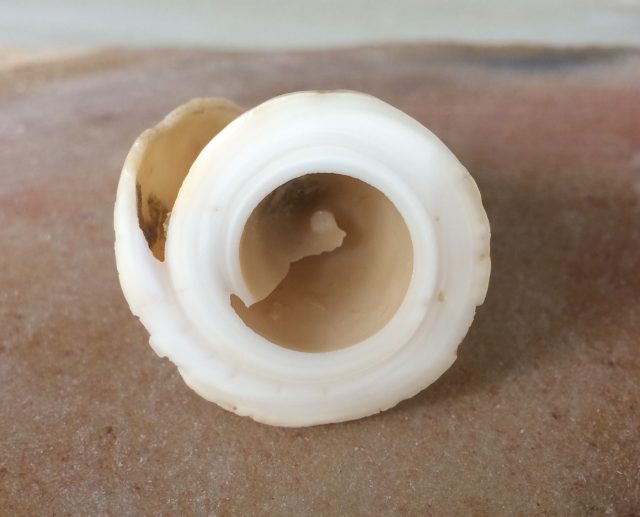
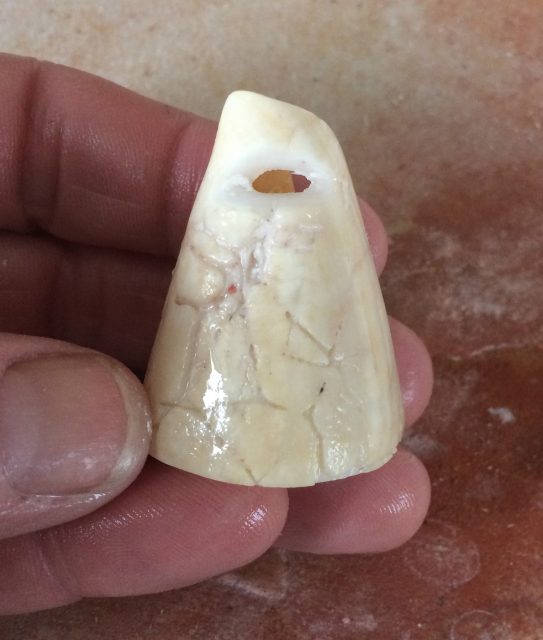
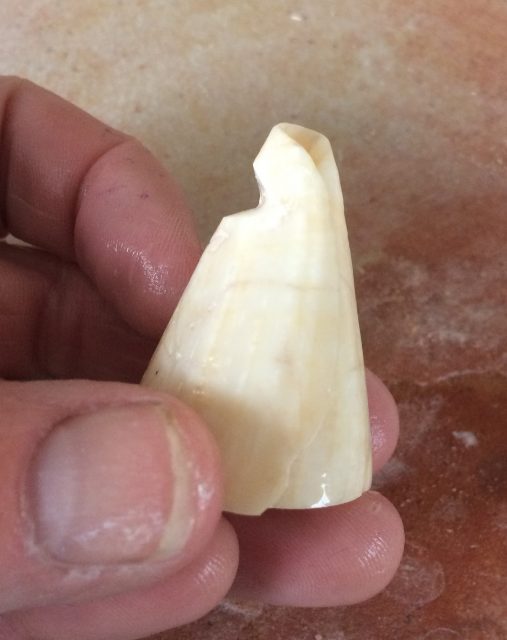
How did you bore the small hole at the tip?
The hole in these tinkle rs is made by grinding a notch in the small end of the shell. In a couple of them i used a pointy flake to round out the hole at the end.